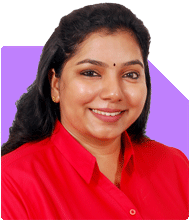Ramalingam Kalirajan |6958 Answers |Ask -Follow
Mutual Funds, Financial Planning Expert - Answered on May 15, 2024
He has an MBA in finance from the University of Madras and is a certified financial planner.
He is the director and chief financial planner at Holistic Investment, a Chennai-based firm that offers financial planning and wealth management advice.... more

Hi I am a single guy I have 10 lakhs of land. 5 lakhs in ppf and 5 lakhs in savings account. I want to have 60 lakhs worth of assets in 3 yrs. Current expenses 90k per month Monthly income 145k How do I do it?
Asset Allocation Strategy
Given your current assets, income, and expenses, let's strategize the allocation of your resources to maximize growth potential while maintaining liquidity and stability.
Utilize Land Investment: Explore opportunities to generate passive income or appreciation from your land investment. Consider leasing it for agricultural purposes, developing it for rental income, or selling it strategically to fund your goal.
Optimize PPF and Savings: While PPF offers stable returns, consider diversifying a portion of your savings into higher-yielding instruments like mutual funds, stocks, or real estate investment trusts (REITs) for potential capital appreciation.
Increase Income Streams
Leverage Skills for Side Income: Explore freelance opportunities, consulting gigs, or online tutoring in your area of expertise to supplement your primary income and accelerate wealth accumulation.
Invest in Income-Generating Assets: Consider investing in rental properties, dividend-paying stocks, or bonds to generate additional passive income streams.
Budgeting and Expense Management
Review Monthly Expenses: Identify areas where you can reduce discretionary spending without compromising your lifestyle. Cut back on unnecessary expenses and redirect savings towards your investment goals.
Create a Realistic Budget: Develop a detailed budget outlining your income, expenses, and savings targets. Monitor your spending regularly and make adjustments as needed to stay on track towards your financial goals.
Regular Investment and Savings
Systematic Investment Plan (SIP): Allocate a portion of your monthly income towards SIPs in mutual funds or other investment avenues to capitalize on market opportunities and achieve long-term wealth accumulation.
Emergency Fund: Build an emergency fund equivalent to 6-12 months' worth of expenses to cover unexpected expenses or income disruptions without derailing your financial plan.
Monitoring and Adjustments
Regular Portfolio Review: Periodically review your investment portfolio's performance and make adjustments based on changing market conditions, personal goals, and risk tolerance levels.
Seek Professional Advice: Consider consulting with a financial advisor or Certified Financial Planner (CFP) to fine-tune your investment strategy, address any concerns, and ensure alignment with your financial objectives.
Conclusion
With careful planning, disciplined savings, and strategic investments, you can work towards achieving your goal of accumulating assets worth 60 lakhs within the next three years. By leveraging your existing resources, increasing income streams, and prioritizing savings and investments, you can pave the way towards financial success and security.
Best Regards,
K. Ramalingam, MBA, CFP,
Chief Financial Planner,
www.holisticinvestment.in
You may like to see similar questions and answers below
Ramalingam Kalirajan |6958 Answers |Ask -Follow
Mutual Funds, Financial Planning Expert - Answered on Jun 26, 2024
Ramalingam Kalirajan |6958 Answers |Ask -Follow
Mutual Funds, Financial Planning Expert - Answered on Jul 26, 2024
Ramalingam Kalirajan |6958 Answers |Ask -Follow
Mutual Funds, Financial Planning Expert - Answered on Jul 11, 2024
Pushpa R |24 Answers |Ask -Follow
Yoga, Mindfulness Expert - Answered on Nov 05, 2024
Ramalingam Kalirajan |6958 Answers |Ask -Follow
Mutual Funds, Financial Planning Expert - Answered on Nov 05, 2024
Nitin Narkhede |34 Answers |Ask -Follow
MF, PF Expert - Answered on Nov 05, 2024
Dr Dipankar Dutta |675 Answers |Ask -Follow
Tech Careers and Skill Development Expert - Answered on Nov 04, 2024
Milind Vadjikar |577 Answers |Ask -Follow
Insurance, Stocks, MF, PF Expert - Answered on Nov 04, 2024
Dr Dipankar Dutta |675 Answers |Ask -Follow
Tech Careers and Skill Development Expert - Answered on Nov 04, 2024
Dr Dipankar Dutta |675 Answers |Ask -Follow
Tech Careers and Skill Development Expert - Answered on Nov 04, 2024
Dr Dipankar Dutta |675 Answers |Ask -Follow
Tech Careers and Skill Development Expert - Answered on Nov 04, 2024
Dr Dipankar Dutta |675 Answers |Ask -Follow
Tech Careers and Skill Development Expert - Answered on Nov 04, 2024
Dr Dipankar Dutta |675 Answers |Ask -Follow
Tech Careers and Skill Development Expert - Answered on Nov 04, 2024




















.jpg)



